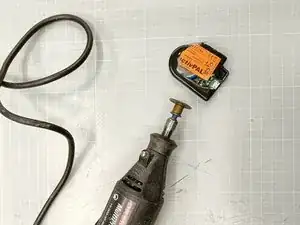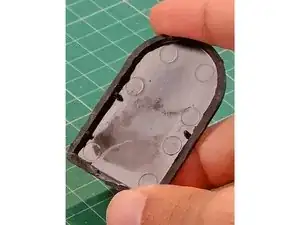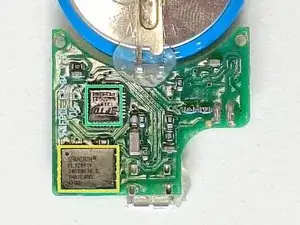Introduction
A research grade IMU-based activity monitor produced by PAL Technologies Ltd. that is strapped to the thigh using an adhesive patch and quantifies physical activity for up to 14 days with data stored on the device. This device was procured for $1000 AUD and provided to us by a research institute. More information on the device can be found here.
Tools
-
-
Strapped to the thigh using an adhesive patch, this device uses a tri-axial accelerometer to continuously measure movement and position of the limb to calculate physical activity intensity, storing data locally on the device. Used for physical activity related research.
-
Length: 54.75mm
-
Width: 36.90mm
-
Thickness: 5mm
-
-
-
The casing consists of two injection molded plastic parts which have been sealed. In this case, heating the device did not help release the adhesive or break the seal.
-
To open the device, a Dremel was used with a rotary blade to cut at the parting line between the two parts. Cutting was initiated at the micro-USB port and then progressed all around the seam.
-
Inside the casing was a PCB and a battery soldered and glued to the PCB.
-
-
-
The device consisted of a round cell battery and a PCB with a micro-USB port which was exposed (the device was not water-resistant).
-
An EVA-based glue was used to hold the USB-port and the battery solder in place. This could also help reduce liquid damage if the device was exposed to a liquid spill.
-
The device uses a Crazell 3.6V LIR3048 Lipo cell (180mAh; 30mm diameter and 4.9mm thickness)
-
-
-
The following components were identified on the PCB:
-
Spansion FL128PIF (Flash memory)
-
Microchip 18LF2520 (microcontroller)
-
Analog Devices ADXL345 (MEMS Accelerometer)
-
Component code: LAFA
-
Fairchild FDW2503N (MOSFET transistor)
-
FTDI FT232R (USB UART IC)
-
-
-
Some other components on the PCB included:
-
Microchip supervisory circuit (Component code: 475E 20605)
-
L28B (Voltage regulator IC) Either Texas Instruments or Diodes Inc.
-
Component code: 680K (?)
-
Component code: ML (?)
-
Component code: LOSA (?)
-
Component code: LAFA (?)
-
-
-
That is the full product opened and studied!
-
In this instance, the case is no longer repairable. A new case would be required to replace the original one.
-
Replacing the battery would require a soldering kit. To check if the product still functions correctly, the individual connection on the PCB would have to be checked with a voltmeter.
-
The device comes with a charging dock for upto 10 devices, but the micro-USB port should allow direct connectivity with computers for data transfer and charging.
-












